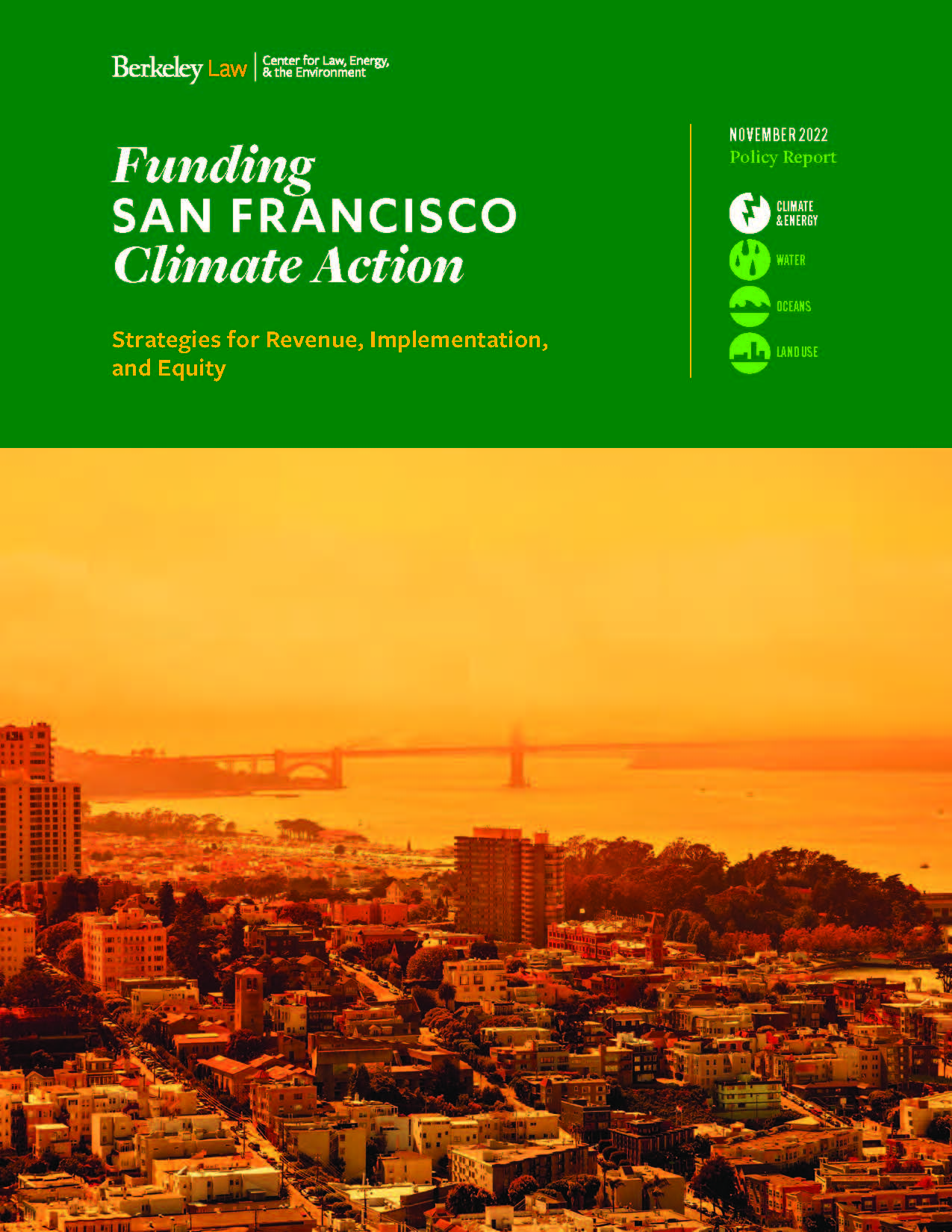In December 2022, the Board of Supervisors passed a resolution urging adoption of our report’s recommendations.
Proposition A, a $300 million affordable housing bond on the March 2024 ballot, included climate-related measures based on our report’s recommendations.
Watch our March 2023 presentation to the San Francisco Board of Supervisors here (CLEE’s presentation begins around minute 15 and ends around minute 32; the CAP discussion is the first agenda item and ends around 1:42:00).
In December 2021, San Francisco issued a Climate Action Plan (CAP) that envisions an ambitious and equitable climate future for the city. The CAP details emissions reduction strategies across six categories: energy supply, building decarbonization, transportation and land use, housing, green infrastructure, and waste reduction. The CAP puts forth 159 actions to achieve net-zero emissions citywide by 2040 while rooting decisions in racial and social equity, economic opportunity, public health, and community resilience.
These actions range from investing in active transportation infrastructure and increasing affordable housing near transit to decarbonizing buildings and supporting green construction apprenticeship programs, with the potential to solidify San Francisco as an innovative and ambitious climate leader while reducing citywide emissions substantially.
But proposing ambitious actions is only the first step; the City’s vision cannot be realized without sustained revenue streams to generate the tens of billions of dollars needed for major infrastructure investments and new programs.
CLEE’s report, Funding San Francisco Climate Action, analyzes funding and financing strategies to generate sufficient revenue for San Francisco’s CAP while advancing equity and ensuring smart implementation.
Drawing on over 50 interviews and two expert workshops with climate finance and policy experts, City leaders, and community stakeholders to understand priorities and best-fit strategies, the report recommends a group of immediate- and medium-term revenue generation mechanisms, alongside a number of priorities for implementing the CAP (such as city staffing and coordination) and ensuring equity (including oversight councils and impact assessments). Example strategies include:
- Proposing and passing general obligation bonds for building decarbonization, housing, and transportation, contingent upon an increase in the City’s existing general obligation bond limits. For example, the funds from a building decarbonization bond could be invested in a set of programs to fund retrofit grants for lower-income residents and multifamily buildings and support financing for moderate- and upper-income residents.
- Instituting downtown vehicle congestion pricing in accordance with San Francisco’s existing plans, as cities like London have done (and New York is considering), with exemptions or discounts for low-income residents.
- Engaging residents of high-need communities in participatory processes to identify high-priority targets for initial investments for a committed portion of the revenue generated.
As the climate crisis intensifies, cities around the globe are taking the lead in planning aggressive climate action. However, few cities have build concrete strategies to pay for–and implement–those ambitious plans. With only a few decades remaining to achieve 2040 and 2050 emissions reduction and resilience targets, now is the time for cities to commit to their CAPs with robust research, engagement, and planning processes.
You can download the full report here and the executive summary here.
Contact Louise Bedsworth, Ted Lamm, Katie Segal, or Ross Zelen for more information.

